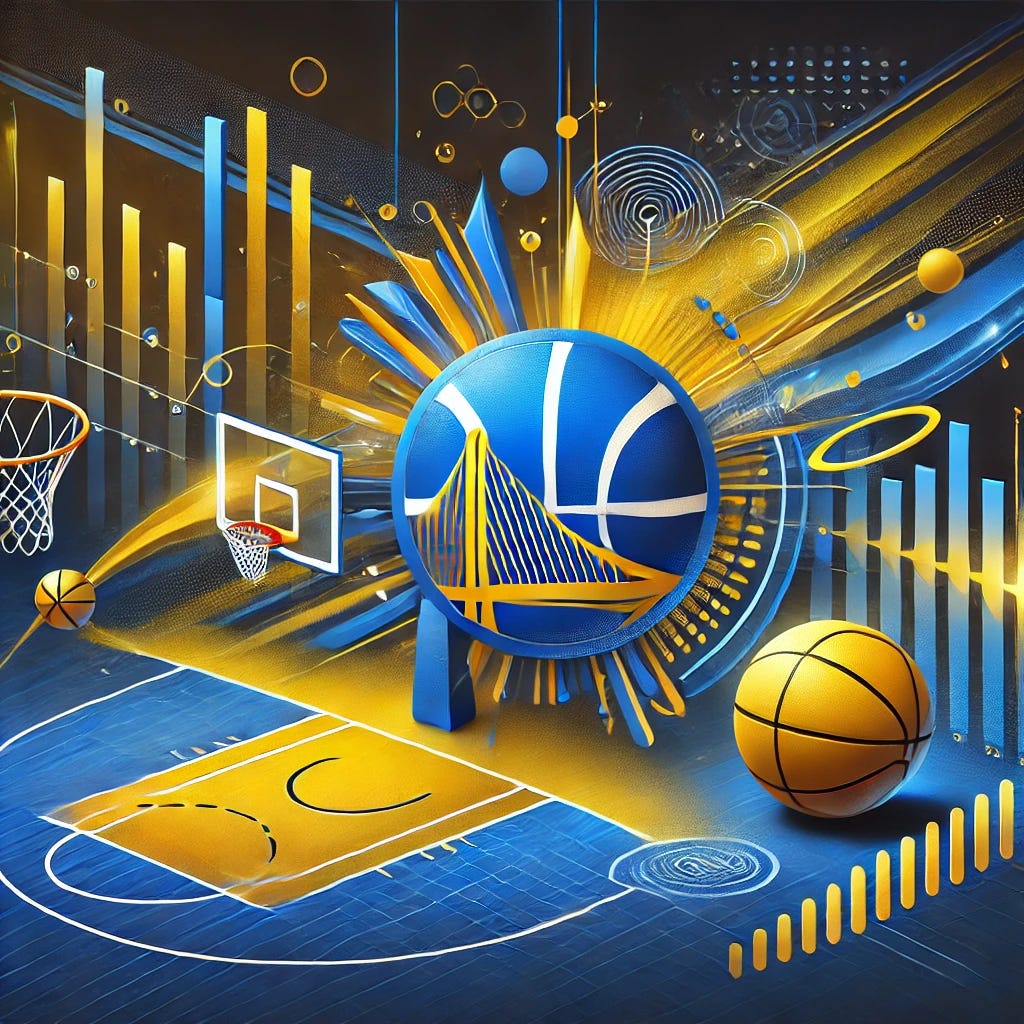Three Point Hype: The Stats That Mislead Modern Basketball
Analyzing the Hidden Bias in Basketball Analytics
Introduction:
Basketball has undergone a statistical renaissance over the last two decades, dramatically reshaping how the game is played, analyzed, and enjoyed. Our research delves into NBA data from 2004-05 to 2024-25, revealing a narrative that might have been overshadowed by the glow of the three-point line: the silent improvement of the two-point shooting.
The Three-Point Explosion:
Since the early 2000s, there's been a marked increase in three-point attempts (3PA). From an average of 15.8 in the 2004-05 season, we've witnessed 3PA surge to 37.5 by the 2024-25 season, more than doubling in volume. This shift is not just in numbers but in strategy, with teams adopting a 'volume from beyond the arc' approach.
Read our special report, “Beyond the Arc: Breaking the 35% Efficiency Barrier”
Consistent Field Goal Attempts:
Despite this rise in three-point attempts, the total field goal attempts (FGA) per game have remained surprisingly consistent, hovering around 88 attempts per game throughout these two decades. This steadfast number of shots per game suggests not an increase in overall shooting but a strategic reallocation from two-point to three-point shots.
Three-Point Efficiency and eFG%:
The efficiency of three-point shooting (3P%) has stayed relatively stable, averaging between 35% and 36%, indicating that the increase in attempts isn't necessarily leading to a higher hit rate. However, the effective field goal percentage (eFG%) has increased from 48.2% in 2004-05 to 54.1% in 2024-25. This rise in eFG% seems paradoxical when one considers the inherent difficulty of three-pointers.
The Hidden Efficiency of Two-Point Shots:
Here's where our analysis suggests a narrative not fully told by modern basketball statistics:
More Misses, Yet Higher eFG%: With more three-point attempts but consistent FGA, there are logically more missed shots per game. However, the increase in eFG% implies that teams are either getting much better at three-point shooting or there's another factor at play.
The Two-Point Advantage: We propose that the improvement or at least maintenance of two-point field goal percentage (2FG%) has been somewhat masked by the three-point revolution. The data suggests that teams might be taking higher quality two-point shots – layups, dunks, and efficient mid-range shots – which could better explain the rise in eFG% without a significant increase in three-point efficiency.
The Narrative Influence:
The shift in how basketball data is presented and discussed over the last two decades has undoubtedly promoted the three-point shot. Metrics like eFG% that give extra weight to successful three-pointers, combined with the allure of analytics that favor shooting from beyond the arc due to its point efficiency, have subtly pushed the narrative away from the two-point game. This shift unfairly gives the advantage to the few players who excel in shooting from long range, potentially at the expense of those who master the mid-range, the paint, or utilize their athleticism to attack the basket.
Conclusion:
Our findings suggest that while the three-point shot has revolutionized basketball, two-point shooting efficiency might be an underappreciated pillar sustaining the increase in effective field goal percentage modern analytics emphasizes to justify the “analytical approach.” The traditional basketball big man is on the brink of extinction, and the athletic slasher's dynamic mid-range game has been undermined by modern analytics' focus. This analysis invites a reconsideration of how we value different aspects of the game, urging coaches to develop a balanced appreciation for all forms of scoring, not just those that fit neatly into the current analytical frameworks.
This analysis invites a reconsideration of how we value different aspects of the game, acknowledging the historical narrative and efforts to minimize the impact of the big man and the athlete in basketball, with a desire to place emphasis solely on skills and integration into a team concept.
Call to Action:
Basketball enthusiasts, coaches, players, and analysts should look beyond the numbers promoting the three-pointer to recognize the nuanced art of the two-point shot. As we move forward, let's ensure that the narrative of the game tells the full story of basketball's diverse scoring landscape.
Basketball analytics needs to "open the books" and reintroduce 2-point field attempts (2PFA) and 2-point field goal percentage (2PF%) to the modern basketball athlete instead of keeping these stats buried and obscured. The three-pointer is a powerful weapon that, when deployed effectively as with the Golden State Warriors, demonstrates that high volume, high-efficiency three-point shooting can be both beautiful to watch and a championship-winning strategy. However, these strategies should be built based on a team's personnel, not merely to keep up with trends or competitors.
________
The No Backboard Basketball League is building a community to create a new basketball experience, tap in! nobackboard.com







